5 Signs your Drive Chain Needs Replacing
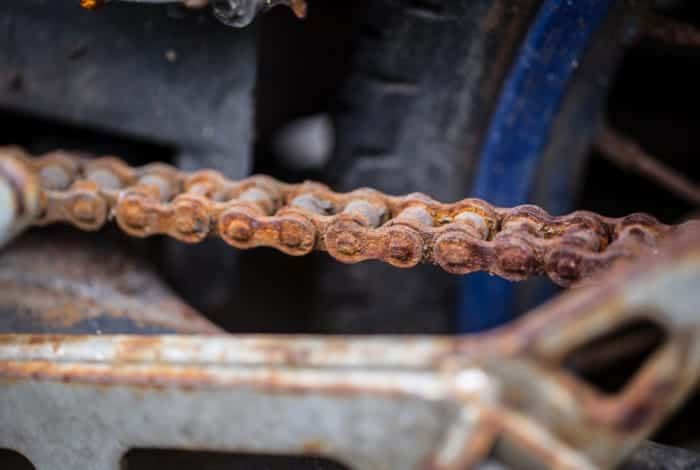
Every motor vehicle requires a form or transferring the powertrain’s power to the driving medium, called the final drive. The most common final drive for motorcycles is the drive chain. So, no chain, no go. However, the chain is a consumable and wears out over distance and time; thus we compiled 5 signs your drive chain needs replacing.
A damaged, old, or worn out chain translates to loss of power, increased fuel consumption; not to mention that irritating noise. If left alone, the chain may snap and that will result in damages to the bike or even injuries to the rider (think of a metal whip). Ouch.
1. You can pull the chain away from the rear sprocket
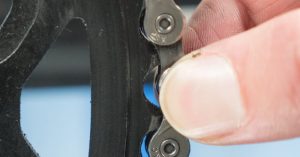
Credit: parktool.com
Start by adjusting the chain to its proper tension. Then try pulling the chain away from the rear sprocket at its tightest point. Also, rotate the wheel to do the same at other places around the chain. You may find that you can pull certain spots compared to others but ff you see daylight between the chain and sprocket at any point, it is time for the chain to go.
2. You see kinks and uneven run
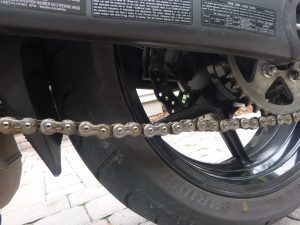
Credit: versysventures.blogspot.com
Take a look at the chain’s bottom run underneath the swingarm. If you notice a kink or kinks, and the chain is wavy, this is the major one of 5 signs your drive chain needs replacing. This happens due to damaged rollers and pins in the chain.
3. You see rubber sticking out from the side plates
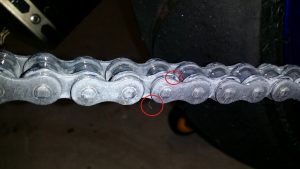
Credit: reddit.com
Sealed chains such as O-ring, X-ring, XW-ring types use rubber gaskets to seal in the grease inside the side plate. So, if you see a piece or pieces of rubber sticking out from the side plates, the seal has broken. Contaminants such as water and dirt will soon enter that space, causing the chain to rot from inside. Time for a new chain if not now then very soon.
4. You cannot tension the chain tension anymore
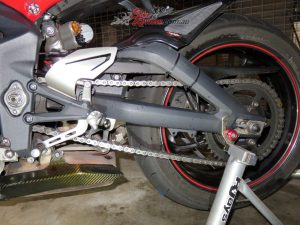
Credit: bikereview.com.au
If your chain cannot be tightened anymore although the rear axle is already at its maximum, it means it is time for a replacement. Do not shorten the chain and continue to use it. A chain “elongates” as the pins have gouged out the space around it to oval. By rule of thumb, a chain that has elongated by 3% over its entire length needs to be replaced.
5. You see the chain rusted out
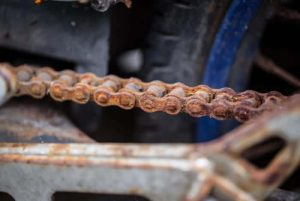
A chain may develop some spots of rust but these can be taken care of by spraying some chain lube on the chain. However, there is no coming back from the condition in the picture above! Just chuck it out before it snaps.
TIPS WHEN REPLACING THE CHAIN
1. Replace the sprockets, too
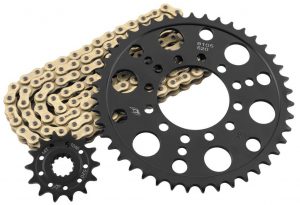
Replace the countershaft (front) and rear sprockets along with the chain. The old chain would have made impressions in the sprockets and they conform to the character of the said chain. Additionally, the spaces between the teeth of an old sprocket would have worn bigger. Fitting a new chain over old sprockets will just wear out the former quickly.
2. Check the chain’s alignment
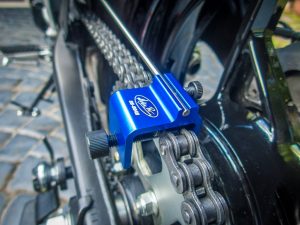
Credit: instructables.com
Make sure that the chain is straight from front to back as a misaligned chain will eat the sprocket teeth away, while putting undue stress on the side plates. A chain is misaligned due to incorrect alignment of the rear axle when tensioning the chain. You can check this with a tool show in the picture above.
3. Do not overtighten the chain
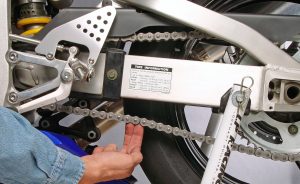
Credit: motorcycle.com
An overtightened chain will wear down the front sprocket quickly. Apart from that, the engine will have extra stress to cope with. Best way to tighten a chain is by having someone sitting on the bike while you do it, as the rear suspension’s sag will tighten the chain a little more. Adjust to the manufacturer’s recommended specs, which specifies a vertical (up and down) free play of 20 – 30mm at the centre point of the chain’s bottom run, underneath the swingarm.
4. Clean and lubricate the chain regularly
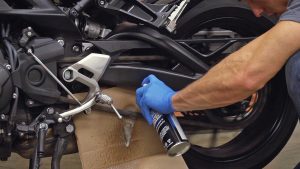
Credit: motorcyclistonline.com
Do lubricate the chain at every 500 to 600 km. Best way to remember this is by doing so after going through respective tankfuls of fuel on your motorcycle. For example, if a full tank on your bike yields 250km, you can lubricate the chain when the second tankful is empty. However, clean the chain whenever it is dirty, for example, after riding through a rainstorm, or flood, or off-road, and lubricate after cleaning.

